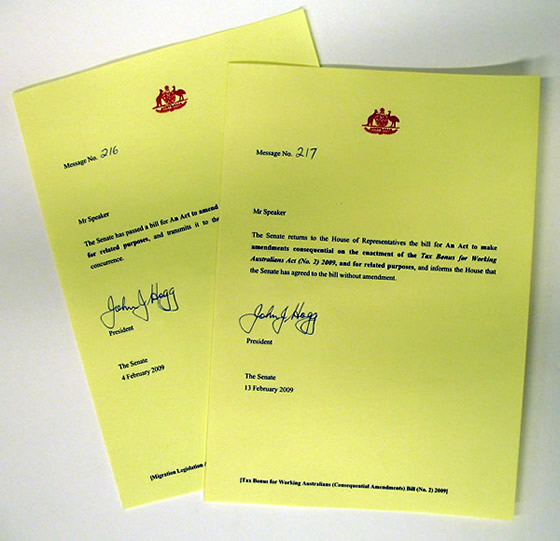153 Messages from the Senate
A message from the Senate to the House of Representatives shall be in writing, signed by the President or Deputy President, and delivered by a clerk at the table or the Usher of the Black Rod.
Amendment history
Adopted: 19 August 1903 as SO 325 but renumbered as SO 321 for the first printed edition
Amended: 2 December 1965, J.427 (to take effect 1 January 1966) (reference added to Deputy President; terminology relating to Senate officers updated)
1989 revision: Old SO 335 renumbered as SO 153; redundant material removed (“, or partly in writing and partly in print,”)
Commentary

Communication between the Houses is by messages such as these
As originally proposed, SO 153 included the stipulation that messages be delivered during the sitting of the Senate. As President Baker acknowledged in moving to omit that stipulation, practical arrangements had evolved to enable the transmission of messages even if the Houses were not sitting.
Messages are produced on customised stationery which allows accompanying bills or other material to be enfolded within the message. Each message is entered into a register by a clerk at the table and given a number. Numbering restarts from 1 at the beginning of each new session or parliament. Messages are then signed by the President and carried by the Usher of the Black Rod to the House, or to officers of the House if it is not sitting. Black Rod also keeps a record of messages taken to the House.
If the President is not available, messages are signed by the Deputy President by virtue of an amendment that came into effect in 1966 to reflect practical arrangements that had evolved.[1]